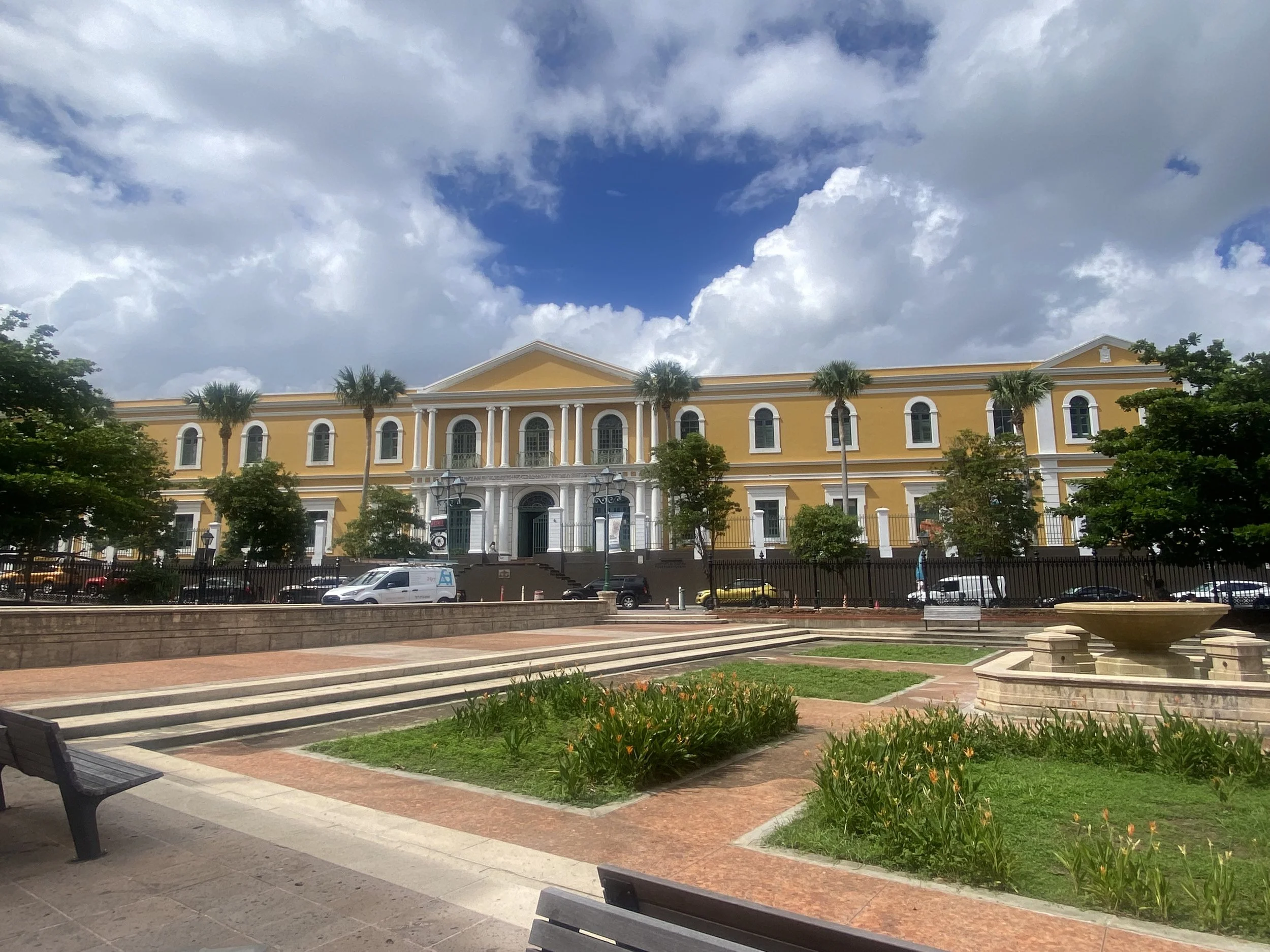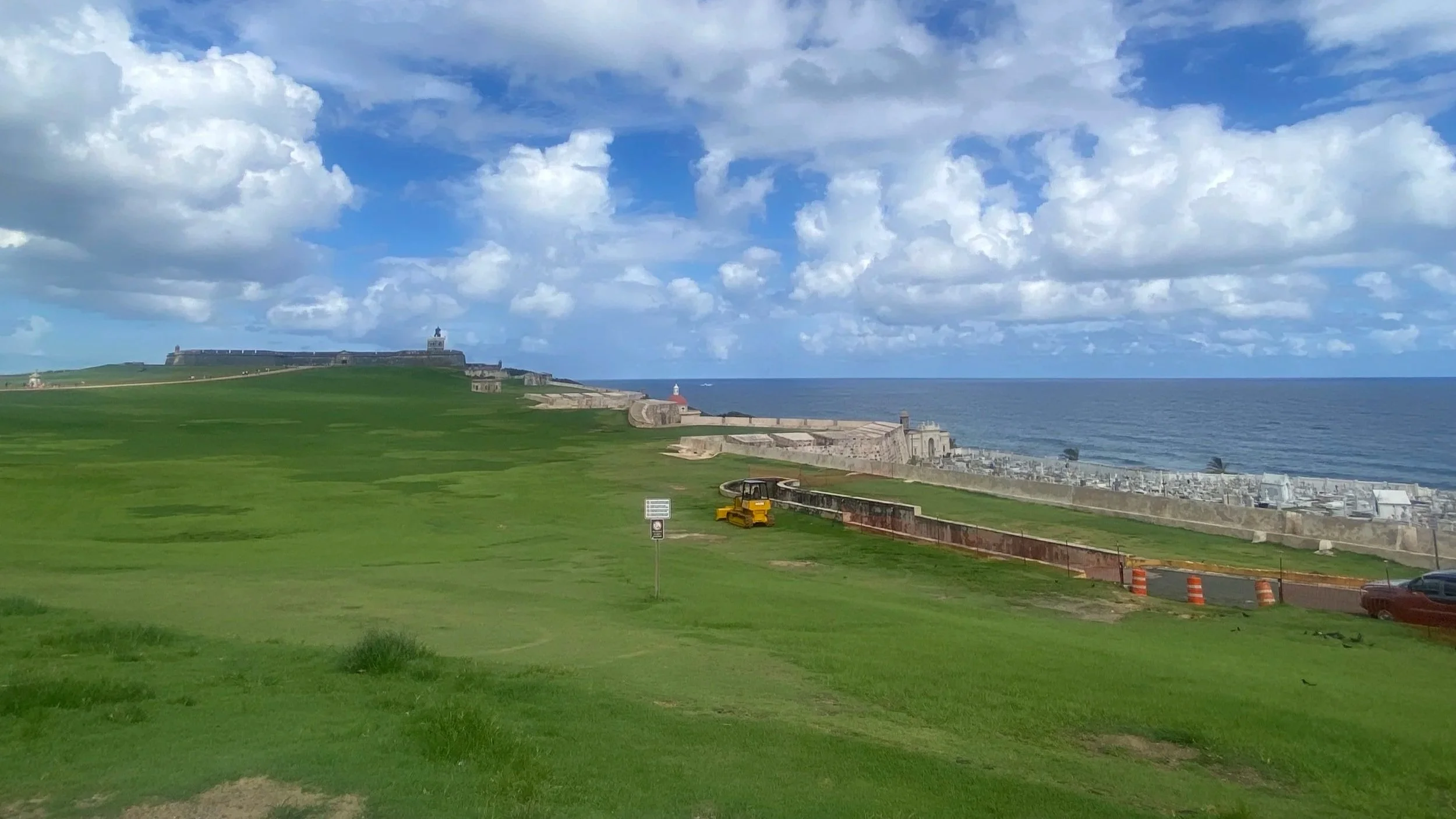A Cascadian’s Caribbean Survival Checklist…and How to Make the Best of Jellyfish Stings
As summer comes to a close, what better way is there to celebrate the beginning of fall than a trip south to the Caribbean, where humidity combats the salty sea air in a sweltering heat of 90 degrees?
I recently visited Puerto Rico with my boyfriend’s family, where they rent out an airbnb in the eastern town of Fajardo. For eight days, we had the opportunity to travel across the main island and visit San Juan, as well as ferry to two neighboring islands: Vieques and Culebra. During those eight days, I was able to witness some of the most fascinating hidden ecosystems, replaced caffeine with alcohol as my poison of choice (mojitos are a wonderful thing) and apparently looked like prey for several of the islands’ most common, and dare I say most obnoxious organisms.
My best times during our trip across the islands were spent at their stunning beaches. The most notable were Luquillo, Playa Negra, Tamarindo, and by far my favorite, Flamenco. Each shore had unique wildlife and social scenes, with some being more suitable for families and day trips, and some with a variety of shops and nightlife. Alongside a region of the Luquillo beach are The Kioskos, or little stores and food vendors aiding the party culture of the beachfront. Music was being played constantly, and its many selections allowed for enjoying every type of craving while you swam in the ocean. I truly believe that their mojitos, made by the wonderful MojitoLab with customizable liquors and flavors, restored my knowledge of how to swim; prior to the trip, I had no memory of it. Playa Negra had a moderate hike across a swamp to get to the water, which I wish I’d known before I trekked it in a cream-colored, mini swimsuit cover dress and the most uncomfortable sandals on the island. However, the native wildlife I saw along the way made up for the bruises. The path was home to dozens of families of hermit and blue land crabs, reptiles ranging from three inches to two feet and horses, which roam freely across the island of Vieques. I found that the hike was actually more scenic than the beach itself, which is known for its black sand. The pigment and amount of the black sand changes with the tides and seasons, and depends on sediment transport from a nearby stream carrying volcanic material to the beach. Supposedly the content of sand is better viewed in PR’s dry months, which is from December to April. At Tamarindo, we saw a sea turtle far across the bay, as well as little angelfish that swarmed our colorful water shoes. We left that beach quicker than usual to go to Flamenco, which is considered one of the most beautiful beaches across the globe. We quickly determined that they were absolutely right. Flamenco beach had the clearest, most beautiful blue water I’ve ever witnessed, and has a variety of booths selling food, souvenirs and drinks. We had pieces of our food stolen by free-roaming roosters and chickens, as well as native cats demanding both fries and pets.
We weren’t surprised at all by the free-roaming cats at Flamenco; there are strays inhabiting most towns across the islands, especially in San Juan. There, cats and kittens are protected under numerous protection agencies, providing food, litter and kitty healthcare for strays and connecting individuals with the means to adopt them. Just one of those organizations called Save a Gato, or SAG, provide neuter and spay services to community cats, monitor by providing fresh food and water throughout the city, provide veterinary care on an as-needed basis, care for pregnant cats, put cats and kittens up for adoption in the United States and so much more to provide safety to their abundant cat population without abuse or euthanization. Walking through Old San Juan, we saw many water troughs and food stations with their logo on the side, with QR codes directing us to their site for more information on their services. With Flight Angels, you can register to transport cats and dogs from Puerto Rico to the United States by being a caretaker on flights, transporting them to their new home. There are also cat sanctuaries around the island, improving the life and health of strays by providing care and sheltering. You can donate or volunteer with these organizations, as well as so many more on their individual websites.
On one of our beach ventures, I was stung by a jellyfish while I was neck-deep in the water. I felt a very sudden and painful prickling sensation on my upper left thigh, and as I kicked to swim away, intense itching and stinging emanated across my entire leg. We left the beach early, and it took a few days for my rash to go away. I’m so grateful that the incident was as minor as it was, but I wish I would have realized the need for protection beforehand; living in the Pacific Northwest, it’s not every day that you need to worry about the threat of jellyfish. Many people living in Caribbean regions wear full-body swimsuits, especially when snorkeling or going out into further depths of the ocean. Another option is ocean-specific, protective sunscreens and creams to defend against stings, sea lice, and of course, UVA/UVB protection.
On the same day, I got to experience the bioluminescent bay in Vieques, or Bahía Bioluminiscente. The bay, which is widely known as the brightest bioluminescent body of water across the globe, is home to an overabundant concentration of microscopic organisms that thrive on the vitamins and nutrients that the water offers. When disrupted, the organisms emit light, which can be seen as white, blue or green. We were able to experience the guided tour during the night of the new moon in glass-bottom kayaks, which is the perfect time to see the most “glow.” The friction of the water and light underneath the glass looked like “going into hyperspace,” and when we’d run our hands through the water, it looked like stars. It came to our attention in the middle of the experience that the bay was also home to a variety of fish and full-bodied wildlife, as well as sharks. This became abundantly clear as one, looking like it was approximately six feet in length, charged towards mine and my boyfriend’s kayak. We could see it clearly on the surface of the water, surrounded by the bioluminescent light from its heavy movement. The assistant guide was able to draw it away before it knocked us into the bay, but it didn’t help my fear of deep, pitch-black waters in the slightest.
Throughout the trip, I also had the luxury of going horseback riding, exploring local shops, ordering my first legal spirit at a bar and determining overall that I’m not a fan of being drunk. I’m grateful to have learned that early in life before my liver suffers. I only wish I would have had the opportunity to spend more time in San Juan, the country’s capital, which is known for its rich history and nightlife. I feel like as a Pacific Northwesterner, I was more susceptible to the environmental obstacles that could have been easily avoided if I was more prepared. For all the wonders and awesome activities that the Caribbean has to offer, I’d want others in the same boat as me to ease their worries and feel confident in their readiness for combatting any common annoyance. After all, opportunities like this come too few and far between.
The vibrant headquarters for Instituto de Cultura Puertorriqueña, or the institute of Puerto Rican culture. The organization is responsible for preserving, enriching and promoting the island's cultural values. the buidling is located in the historic Ballajá Quarter of Old San Juan.
The Extended Survival Checklist: What to Consider Alongside Your Usual Packing List
Reef-safe sunscreen (and lots of it)
I brought my regular sunscreen for my face, which is SPF 30 for daily use. I strongly urge buying a full-body sunscreen that is reef-safe and SPF 30 or above. I brought an SPF 50 cream, as well as an SPF 30 spray for reapplication every two hours and after swimming.
Jellyfish repellant
These can be often found as a blend with sunscreen on Amazon or at Walmart.
Insect repellent
To help protect against ticks and mosquitoes, by which my boyfriend and I were eaten alive. I would recommend the Badger brand, due to their high variety of options and all-natural, environmentally safe products.
Shower products (you’re going to need more than you think)
On our trip, I ended up washing my hair every day due to the humidity, the rain and the salt-water from swimming. I typically wash my hair two or three times a week, so this took me by surprise and I went through both bottles of my travel shampoo and conditioner. However, I would skip the scented lotions, perfumes and leave-in products if you’re planning on spending all of your time in the water during your trip. Highly-scented and chemical-dense products are harmful to ocean wildlife.
A standard first-aid assembly
Extra bandaids and soothing medicines could save your trip, while battling discomfort and bites.
A waterproof bag
Don’t be the guy who walks into the ocean with your wallet or phone in the pockets of your swim trunks (my boyfriend). If you want your belongings close while you’re in the water, or are very forgetful when it comes to keeping track of them, put them in a water-safe container or bag for convenience.
Both “pretty” and practical swimwear
It’s good to bring safe and pragmatic swimwear as well as cute and aesthetic ones. When snorkeling or scuba diving, cover more of your body (especially your torso) as you get closer to various forms of flora and fauna in the ocean. Save the pretty swimsuits for when oceanside risk is low.
Buy bottled water, or take a portable water filter
Don’t drink tap water while you’re visiting Puerto Rico. In the past, the island has had ongoing issues with high levels of lead and other contaminants, and “has the worst record in the U.S. for drinking water safety,” according to NRDC senior health policy advocate Erik Olson. It’s always better to be safe than sorry while you’re traveling, especially when you’re consuming more water in humid climates.
Electrolyte packets
Extra electrolyte sources are extremely beneficial in environments where you experience more water loss. Invest in Liquid IV packets, supplements, sports drinks and the addition of sea salt into your water for better absorption.
A light rain jacket
I was surprised by the amount of rain we received during our stay, but we were also receiving the effects of a hurricane beginning to form in the Atlantic. Pack a lightweight, breathable rain jacket and gear just in case.
Water shoes
On several shores, water shoes are required due to the existence of sea urchins close to shore. Pack a pair alongside your regular, comfortable walking shoes.
Basic Spanish vocabulary
Most of Puerto Rico, as well as its neighboring islands, speak English. However, it’s good practice to learn some basic phrases and vocab to better communicate and navigate the area.
If you have prospects of traveling to the Caribbean, I wish you the best of luck! Be sure to spend some time in Old San Juan and take full advantage of the area’s beautiful scenery and unique activities.
the grounds of the castillo san filepe del morro, a castle located in SAn Juan. Alongside the fort is the Cementerio Santa María Magdalena de Pazzis, a colonial-era cemetary overseeing the atlantic, and is the resting place of many notable puerto rican citizens.

